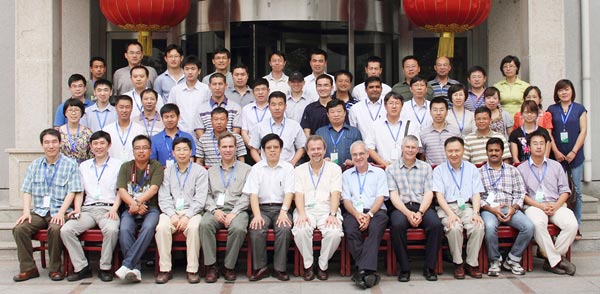Agricultural extension agents are getting seed of quality protein maize to the mountainous areas in the Philippines and encouraging smallholder farmers in its use. Widespread use of this nutritionally-enhanced maize can potentially help reduce rice dependency, improve child nutrition, and supply grain for inner city school meal programs.
Maize is not the first crop that comes to mind when one thinks about the Philippines, where rice paddies dominate the landscape. But a traveler to the nation’s mountainous regions will increasingly find maize crops there. Through public sector maize breeders and extension officers, upland farmers are beginning to sow the seed of an improved quality protein maize (QPM) variety. QPM looks, grows, and tastes like normal maize but contains higher levels of two essential amino acids, lysine and tryptophan, for protein synthesis in humans and farm animals like pigs and poultry. Nutritional studies in Ethiopia have already demonstrated that QPM consumption can reduce or prevent stunted growth in young children whose diets are heavy in maize.
Where small is not always good, quality counts
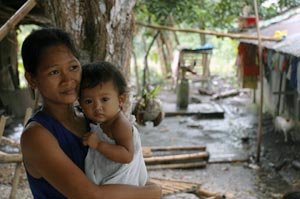 The Philippine uplands are home to the poorest farmers and minority groups, for whom arable land is scarce and hunger a constant threat. The average family includes at least five children, and must survive on a farm homestead of only one hectare. Antonio Rodriguez is a 46-year-old farmer in Jose V. Dayao village outside of Naga City. He struggles to put food on the table for a family that includes
The Philippine uplands are home to the poorest farmers and minority groups, for whom arable land is scarce and hunger a constant threat. The average family includes at least five children, and must survive on a farm homestead of only one hectare. Antonio Rodriguez is a 46-year-old farmer in Jose V. Dayao village outside of Naga City. He struggles to put food on the table for a family that includes
six children. “We own half a hectare of land and rent an additional two hectares,” he explains, “but it is not enough to support our family.” In a nearby village, farmer Geraldine Delphino and her husband must feed themselves and their five children from little more than half a hectare of land. “My husband and I are both farmers,” says Delphino. “He often works as a laborer on other farms. We sell whenever we have a surplus and buy white maize when we can.”
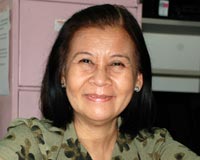 Wilma Hurtada, Food Science Professor at the University of the Philippines, Los Baños, has studied QPM and nutrition in children. “For families with limited land, limited resources, and a large family, the quality of the food they grow is very important,” she says.
Wilma Hurtada, Food Science Professor at the University of the Philippines, Los Baños, has studied QPM and nutrition in children. “For families with limited land, limited resources, and a large family, the quality of the food they grow is very important,” she says.
Reaching farmers in the marginal areas
As in many developing countries, in the Philippines yellow-grained maize is grown mostly by large-scale commercial farmers for animal feed and non-food uses. White-grained maize is produced by smallholders and used for human foods, particularly in maize-dependent upland areas, according to Art Salazar, Principal Maize Breeder at the Institute for Plant Breeding (IPB), Los Baños. “It’s difficult to reach farmers with improved white maize cultivars,” says Salazar. “They live in the marginal areas, on the outskirts of economic activity.”
The IPB took QPM seed from CIMMYT, where this specialty maize was developed, and over four years adapted it to local conditions. A QPM variety was finally released by the National Seed Industry Council in 2008. “Now we have a variety which is high in lysine and tryptophan and which suits the climate of the Philippines and Filipino taste preferences,” says Salazar. “This was all done through conventional breeding and research collaboration with CIMMYT.”
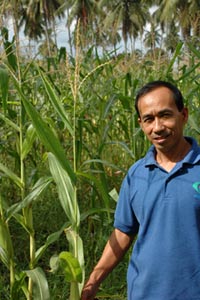 To test and promote the white QPM with farmers and distribute seed, Salazar relies on the extension support of experts from diverse Philippine institutions. One is Efren E. Magulama, a maize breeder at the University of Southern Mindanao. “We work with about 20 farmers in Region XII Province of North Cotabato, Magpet Municipality, to introduce QPM into communities—mostly in the mountainous regions, which are difficult to reach,” says Magulama.
To test and promote the white QPM with farmers and distribute seed, Salazar relies on the extension support of experts from diverse Philippine institutions. One is Efren E. Magulama, a maize breeder at the University of Southern Mindanao. “We work with about 20 farmers in Region XII Province of North Cotabato, Magpet Municipality, to introduce QPM into communities—mostly in the mountainous regions, which are difficult to reach,” says Magulama.
Farmer Marevic Fraile in Magpet Municipality, North Cotabato grows rubber, banana, coffee, and cocoa to sell, but grows maize for food. “We eat maize three times a day with every meal, mostly as grits,” Fraile explains. “We used to grow Tiniguib [a white maize variety popular in the Philippines], but when we switched to QPMour yields improved.”
Studies have shown that on average the QPM developed by the Filipino breeders yields 10% more than traditional white maize varieties. This is particularly important for its adoption by maize-dependent farmers, who are interested first and foremost in higher yields.
Homing in on nutrition
The nutritional advantages of QPM create opportunities to foster demand at some novel points in the food value chain, raising its interest for the farmers and seed producers. Salazar is working with Filipino health officials (in the Department of Social Welfare and Development and the Department of Health) and partners like Hurtada to introduce QPM grits into school meal programs in the poorest districts of Metropolitan Manila. “The national average of stunting in children in the Philippines is 29%; also 30% are energy deficient,” says Hurtada. “That’s just the national profile. When you go to the areas we’re targeting, you see a much higher incidence.”
The project aims to work with families whose parents have daily incomes under USD 1.20. “The children receive only about 980 calories a day,” says Hurtada. “They go to school without breakfast. When we ask how often they eat, they tell us one or two times a day.” The goal of the feeding program is to reach 1 million children, starting with 150 schools in Quezon City. “If we can do that, then we can really make a big impact on reducing malnutrition among children and general food security in the Philippines.”
“Instead of food aid, this initiative is developing a market for white maize farmers, improving nutrition for both farmers and school children, and contributing to the growth of the Filipino economy,” explained Salazar.
For more information: Michelle Defreese (m.defreese@cgiar.org)
Art Salazar Interview

Dr. Artemio Salazar is the Principal Maize Breeder at the Institute of Plant Breeding (IPB) in Los Baños, Philippines. He has been working on maize for the past 30 years, developing lines adapted to conditions in the Philippines from the germplasm sourced from indigenous farmers, local partners, and international organizations such as CIMMYT. He is the Deputy Director of the University of the Philippines’ Crop Science cluster in Los Baños.
In a rice-dependent country like the Philippines, how did you decide to become involved with maize breeding?
I completed my BSc in Agricultural Chemistry but soon became fed up of being around chemicals, so I shifted to agronomy. I really enjoyed working outdoors, being in the fresh air. I was approached by the first director of IPB in 1975 to be a part of the first technical staff of the Institute. I completed my PhD at Iowa State University in 1985. Now I realize I made the right choice because maize can and will help address nutritional needs and food insecurity issues in the Philippines.
How do you see maize playing a role in food security in the Philippines?
The Philippines should not be importing rice. 10% of rice importations could easily be filled by maize. If you could convince the equivalent of Filipinos to eat maize or a rice/maize blend, we would not have to import rice. We could eventually become a net exporter of rice. Importing rice does not make a lot of sense when there are maize substitutes. It aggravates social problems. If maize famers are poor, they will flock to the cities or become rebels. That has tremendous social costs. Investing in maize is a way to stem patterns of rural to urban migration.
What role do you see QPM varieties having in the Philippines?
Maize has been here all along for the past five hundred years or so. QPM can be a rally point for people to become interested in maize because it has a more balanced protein quality. If you can stimulate an increased interest in maize through QPM, half the problem would be solved.
You’ve also been involved in developing mills to produce maize grits and maize flour. What role do you see these playing in improving food security?
Crops are grown in the rural areas and they have to be milled. So they bring them down do the lowland areas to process them and bring them back up to the mountainous areas. The mills have to be cheap, efficient, and mobile. These mills (cost) only USD 1,500 and can be used with gasoline instead of electricity. 25 billion pesos of wheat flour are imported every year; that’s USD 500 million. If you substituted 20% of that with corn flour, you could recover the cost of USD 100 million. If you transmitted that to rural farmers, imagine what kind of impact that would have. Plus, the maize still retains its QPM properties, even when milled.
What is the role CIMMYT is playing in this initiative?
One thing is for certain, this project is not relying on foreign funds or institutions. This is a Filipino initiative. The germplasm which CIMMYT has been providing is already a big help. Collaboration of this kind can really help host countries. Funds should be sourced from government resources because it is sustainable. Funds should also come from the private sector. Then, it continues on and on. That is sustainable funding.
Creating an impact does not have to be an expensive proposition. If you can develop a technology and the host country can make full use of it, you can have a tremendous impact. When we started this, there was no foreign funding – only local funds in addition to CIMMYT germplasm and collaboration. A little research collaboration like the interaction between CIMMYT and IPB can go a long way. |
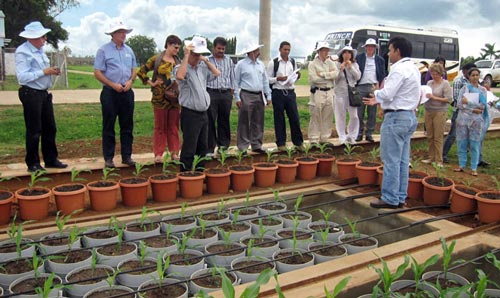 After a formal introduction, Zaidi gave an overview of the research program and priorities of the CIMMYT-Asia maize program, and the ongoing collaborations with various public and private institutions in the region, including the International Maize Improvement Consortium (IMIC-Asia). He emphasized CIMMYT’s initiatives towards purposeful partnerships, which offer a big opportunity for pro-poor agricultural investment and innovations (such as IMIC-Asia and MAIZE), the global alliance for food security, and the livelihood of resource-poor in the developing world.
After a formal introduction, Zaidi gave an overview of the research program and priorities of the CIMMYT-Asia maize program, and the ongoing collaborations with various public and private institutions in the region, including the International Maize Improvement Consortium (IMIC-Asia). He emphasized CIMMYT’s initiatives towards purposeful partnerships, which offer a big opportunity for pro-poor agricultural investment and innovations (such as IMIC-Asia and MAIZE), the global alliance for food security, and the livelihood of resource-poor in the developing world.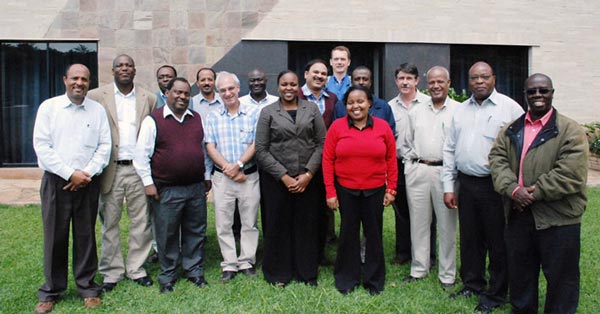
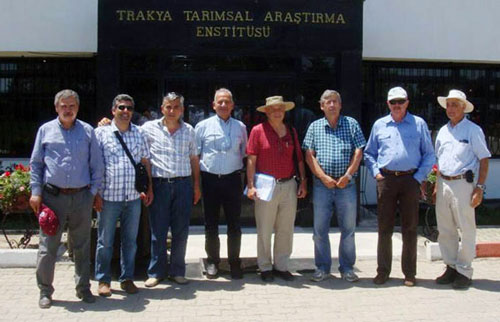 The
The  The Philippine uplands are home to the poorest farmers and minority groups, for whom arable land is scarce and hunger a constant threat. The average family includes at least five children, and must survive on a farm homestead of only one hectare. Antonio Rodriguez is a 46-year-old farmer in Jose V. Dayao village outside of Naga City. He struggles to put food on the table for a family that includes
The Philippine uplands are home to the poorest farmers and minority groups, for whom arable land is scarce and hunger a constant threat. The average family includes at least five children, and must survive on a farm homestead of only one hectare. Antonio Rodriguez is a 46-year-old farmer in Jose V. Dayao village outside of Naga City. He struggles to put food on the table for a family that includes Wilma Hurtada, Food Science Professor at the University of the Philippines, Los Baños, has studied QPM and nutrition in children. “For families with limited land, limited resources, and a large family, the quality of the food they grow is very important,” she says.
Wilma Hurtada, Food Science Professor at the University of the Philippines, Los Baños, has studied QPM and nutrition in children. “For families with limited land, limited resources, and a large family, the quality of the food they grow is very important,” she says. To test and promote the white QPM with farmers and distribute seed, Salazar relies on the extension support of experts from diverse Philippine institutions. One is Efren E. Magulama, a maize breeder at the University of Southern Mindanao. “We work with about 20 farmers in Region XII Province of North Cotabato, Magpet Municipality, to introduce QPM into communities—mostly in the mountainous regions, which are difficult to reach,” says Magulama.
To test and promote the white QPM with farmers and distribute seed, Salazar relies on the extension support of experts from diverse Philippine institutions. One is Efren E. Magulama, a maize breeder at the University of Southern Mindanao. “We work with about 20 farmers in Region XII Province of North Cotabato, Magpet Municipality, to introduce QPM into communities—mostly in the mountainous regions, which are difficult to reach,” says Magulama.
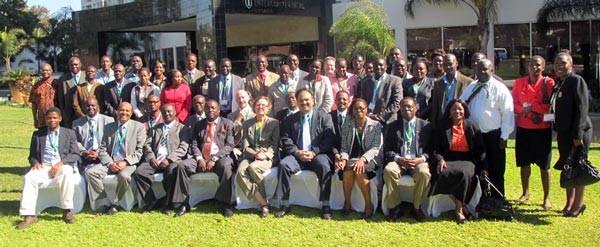
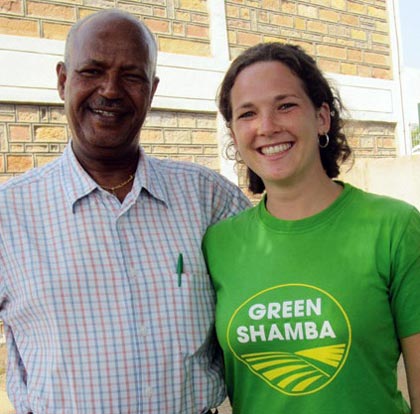 On 12 June 2012, the Drought Tolerant Maize in Africa (DTMA) project leader, Tsedeke Abate, led a group from CIMMYT in a farmer field day organized by the non-governmental organization “
On 12 June 2012, the Drought Tolerant Maize in Africa (DTMA) project leader, Tsedeke Abate, led a group from CIMMYT in a farmer field day organized by the non-governmental organization “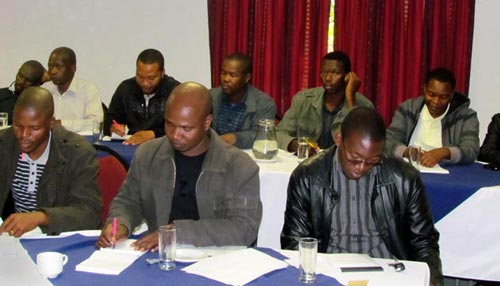 During 25 – 30 June 2012, CRP MAIZE and FAO-Swaziland supported the participation of 32 maize researchers and technicians in a maize training course in Mbabane, Swaziland. The course attracted agricultural researchers and extension staff from the Department of Agricultural Research and Special Services (DARSS), NGOs, and seed companies.
During 25 – 30 June 2012, CRP MAIZE and FAO-Swaziland supported the participation of 32 maize researchers and technicians in a maize training course in Mbabane, Swaziland. The course attracted agricultural researchers and extension staff from the Department of Agricultural Research and Special Services (DARSS), NGOs, and seed companies. 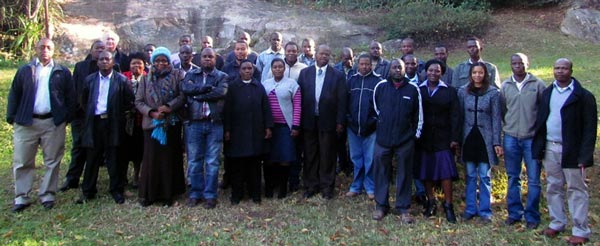
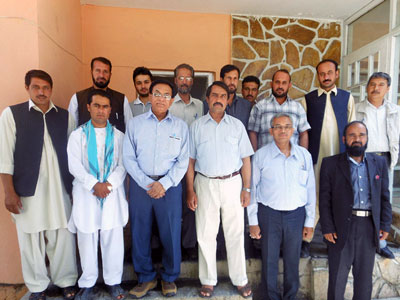 Dr. Mishra began the course by reviewing basic statistical concepts and discussing the statistical tools and concepts needed to design and analyze field experiments that would lead to scientifically valid interpretations. He went on to describe how to choose experimental designs, lay out field experiments, and analyze and interpret the results. He had the participants do useful exercises as well as analyze data for hands-on experience. All the participants were keenly interested and excited to have the opportunity to analyze and interpret data from their own experiments. The general feeling at the end of the two-day event was that it should have lasted at least a week. Upon presenting certificates to course participants, Mr. Qasem Obaidi, ARIA Director, thanked Dr. Mishra and CIMMYT for the capacity building effort and expressed his wish that a follow-up course be held to help consolidate the gains and enable Afghan researchers to learn more about experimental design and analysis.
Dr. Mishra began the course by reviewing basic statistical concepts and discussing the statistical tools and concepts needed to design and analyze field experiments that would lead to scientifically valid interpretations. He went on to describe how to choose experimental designs, lay out field experiments, and analyze and interpret the results. He had the participants do useful exercises as well as analyze data for hands-on experience. All the participants were keenly interested and excited to have the opportunity to analyze and interpret data from their own experiments. The general feeling at the end of the two-day event was that it should have lasted at least a week. Upon presenting certificates to course participants, Mr. Qasem Obaidi, ARIA Director, thanked Dr. Mishra and CIMMYT for the capacity building effort and expressed his wish that a follow-up course be held to help consolidate the gains and enable Afghan researchers to learn more about experimental design and analysis.